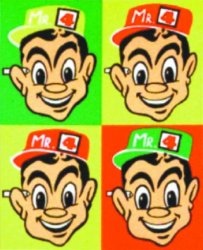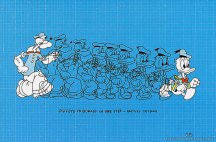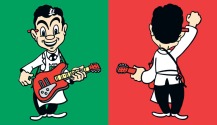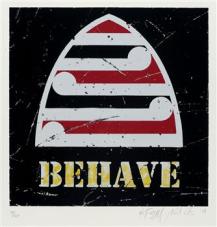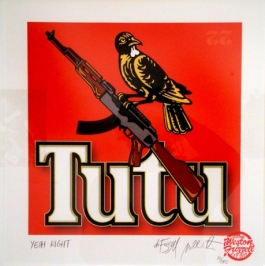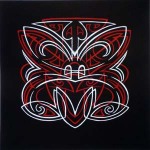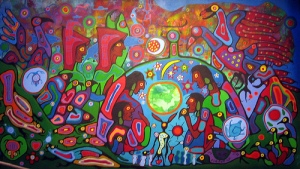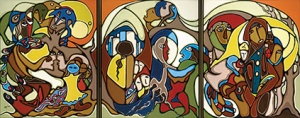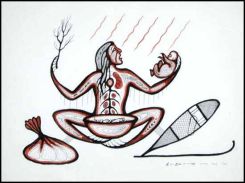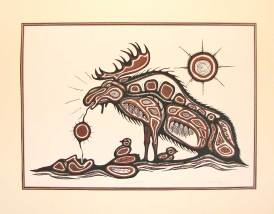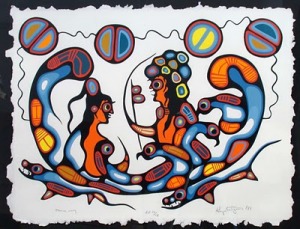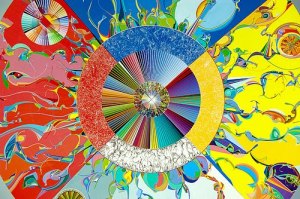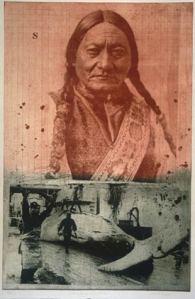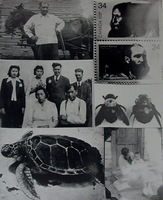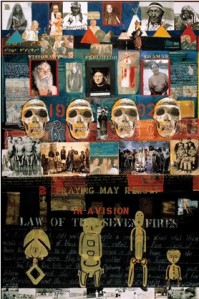South Pacific – New Zealand Maori Art
a) Robyn Kahukiwa-Taranga
Robyn Kahukiwa was born in Australia. (14 Sept 1941). She is a New Zealand painter. Her skills in painting was completely self-taught. Her return in New Zealand in 1960 helped developed her Maori cultural heritage. Her artwork Taranga highlights episodes in the narrative of the legendary hero and demigod Maui. This art piece used balance in the principles of design. The hair gives a direction feeling as it guides the audience’s eye horizontally across the picture.
b) Dick Frizzell
Frizzell studied at the University of Canterbury School of Fine Arts from 1960 to 1963, Dick worked for advertising for many years and developed a reputation for advertising characters. Dick’s ‘Micky to Tiki’ has become the best-selling print in New Zealand.
c) Weston Frizzell
Weston Frizzel is a group of two artists, whose artwork often have contents of modern popular culture. Otis Frizzell and Mike Weston is the founder of the group. Both artists have their roots deep in New Zealand’s counterculture.
Canadian – Woodland Artists
a) Norval Morriseau
Norval Morrisseau was an Aboriginal Canadian artist. Morrisseau’s artworks’ content often are about the legends of his people (the aboriginals), the cultural and political tensions between native Canadian and European traditions, his existential issues, spirituality and mysticism. His paintings usually have thick black outlines filled with bright colors. His painting A Separate Reality took him five years to complete. This picture portrays what Morrisseau dreamed of what the after life is like.
b) Daphne Odjig
Daphne was born on September 11,1919, She was raised on the Wikwemikong Unceded Indian Reserve on Manitoulin Island Ontario. She claims her first and biggest influence on her art is her grandfather paternal grandfather Jonas, she says “My grandfather played a great role in my life – he nurtured my creative spirit – he was the first one I ever drew with…he was my first mentor”. Her artwork Roots uses mostly warm colors, it is fairly well-balanced as characters are fairly evenly spaced out.
c) Carl Ray
Carl Ray was born in 1943 on the Sandy Lake First Nation reserve in Ontario. Carl was the first one to break the taboo of painting the sacred beliefs and stories of his people. All of his skills are self-taught. His style usually consists of a painting of a single subject on a white or plain background. The subject is in the center of the page and have often dark colors to bring emphasis to the subject(s).
d) Jackson Beardy
Jackson Beardy was raised by his grandmother, who has taught the rich history and the sacred stories of his ancestors. At the age of sixteen, he attended residential school at Portage la Prairie. Beardy’s artwork expresses fundamental cosmological and spiritual concepts such as balance in nature, growth and regeneration. Beardy’s artwork usually is on a white or plain background, the subjects are painted with bright colors, which brings emphasis to the subject. Beardy’s artwork are usually drawn across the page, thus bringing balance to his works.
e) Goyce Kakegamic
Goyce Kakegamic was born in Sandy Lake, Ontario in 1948. Kakgamic started painting when he was a teenager under the guidance of their Ojibwa brother-in-law, Norval Morrisseau, and Cree artist, Carl Ray. His paintings are also influenced by Jackson Beardy, Alex Janvier and Daphne Odjig. Just like the artists that influenced him, his works are also mostly on a white or plain background with thick black outline. In his work Family Unity, he used lines which made the image flow and allows the viewer’s eyes to follow it.
f) Alex Janvier
Born of Dene Suline and Saulteaus descent in 1935, Alex Janvier was raised in the in his family until the age of eight. At the age of eight, he was sent to the Blue Quills Indian Residential School. It was the residential school that given him the tools to create his first paintings.
g) Jim Logan
Jim Logan is a First Nations artist who lived in the Yukon for many years. In his painting A Rethinking on the Western Front, Jim showed that he clearly dismissed Darwin’s Theory of Evolution. In this artwork, a wide range of color is used. By making Adam Indian and adding the texts, he shows humour through his work.
h) Carl Beam
Carl Beam was born Carl Edward Migwans on May 24, 1943, in M’Chigeeng First Nation. His style of art is by putting together multiple photographs onto a single plain. Due to the time period Beam lived, his artwork does show signs of age especially in photographs. There is a grungy texture to his work due to old photography and his main style of art.
i) Jane Ash
Jane Ash was born in Fort Chipewyan in 1951. Jane Ash Poitras became part of the Canadian mainstream graduating with a degree in science. But, by the time she was 30 she’d reconnected with her native ancestry and it was a seminal event. It changed her perspective on how she defined herself in the world. Her style of art is plains art, in her artwork Living in the Storm Too Long, the colors uses are very dull colors, there are many repetitions and each image is very well aligned with another. It is very balanced.


